Tallinn, Estonia: A City That Moves Forward Without Leaving Its Past Behind
with a comprehensive city guide & a recipe for creamy polenta with wild mushrooms & black garlic butter
“We Estonians have learned that freedom isn't given, it's taken, protected, and renewed each day.” - Mart Laar, former Prime Minister
It’s impossible to walk through Tallinn without feeling the weight of history pressing up against the lightness of the present. This is a city that knows what it means to lose freedom, and what it takes to earn it back. It sits just over 100 miles across the Gulf of Finland from Helsinki, facing east toward Russia, a proximity that’s never just geographic.
Estonia, like its Baltic neighbors, has lived through occupation, censorship and forced silence. Many here still remember what that felt like. Which is why democracy doesn’t feel like an abstraction in Tallinn, it feels lived-in. Earned. Guarded. Valued.
Some cities stay with you not because they're flashy, but because they're real. Tallinn is one of those places. I've found myself thinking about it constantly since I returned home.
It had been on my travel list for years, but what I found there went far beyond my expectations. I left with genuine respect for its resilient, innovative people, its layered, often painful, history and its unpretentious character that has endured through centuries.

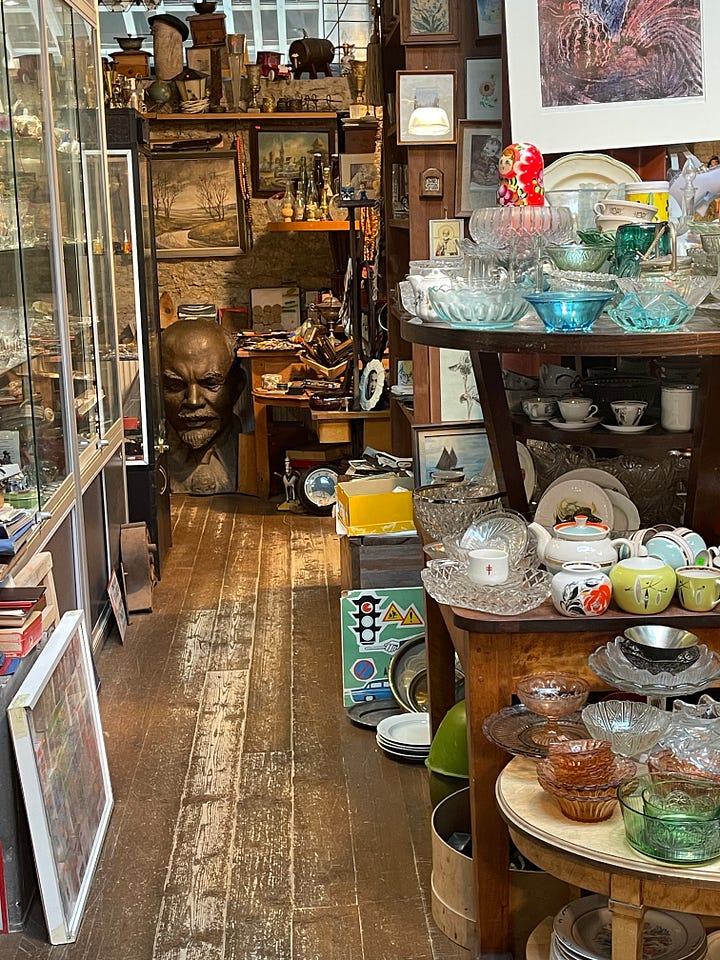


You see it in the blue and yellow flags in windows and shopfronts, Estonia’s solidarity with Ukraine is not performative; it’s personal. You feel it in the strength of its independent businesses, the pride in its language and crafts, the subtle but steady refusal to forget the past or allow it to define the future.
A friend of mine visited Tallinn in 1991, the year Estonia regained independence from the Soviet Union. She messaged my throughout my visit about her own experience, she recalled debris in the streets, soldiers everywhere, shuttered storefronts, and a lingering sense of uncertainty.
It made my visit to this city feel even more poignant, because the Tallinn I saw was vibrant, forward-looking, open.
Turbulent History & A Strategic Position
Estonia’s history is layered and often turbulent, shaped by centuries of foreign rule. The country has been occupied by Danes, Germans, Swedes, and Russians, each leaving their mark not just on the architecture of Tallinn but on the psyche of the nation.
Walking through the Old Town, with its medieval towers and pastel merchant houses, you get a sense of how strategically important this place has always been. Positioned along the Baltic Sea, Tallinn was once a key member of the Hanseatic League, a powerful trade network of northern European cities. Its cobbled streets were built on commerce, but also on control.
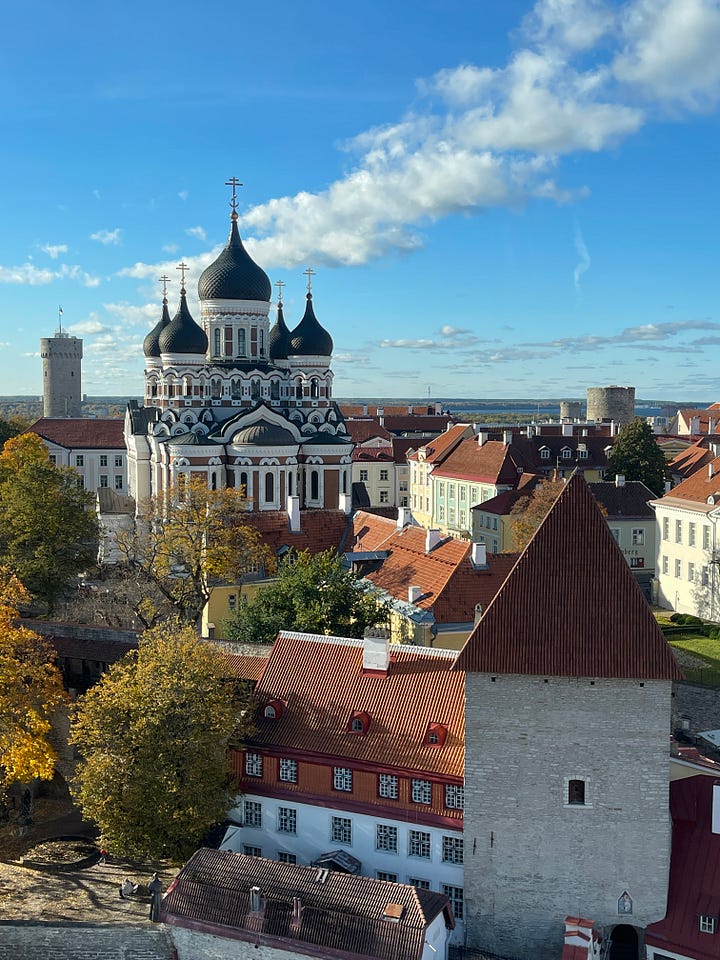
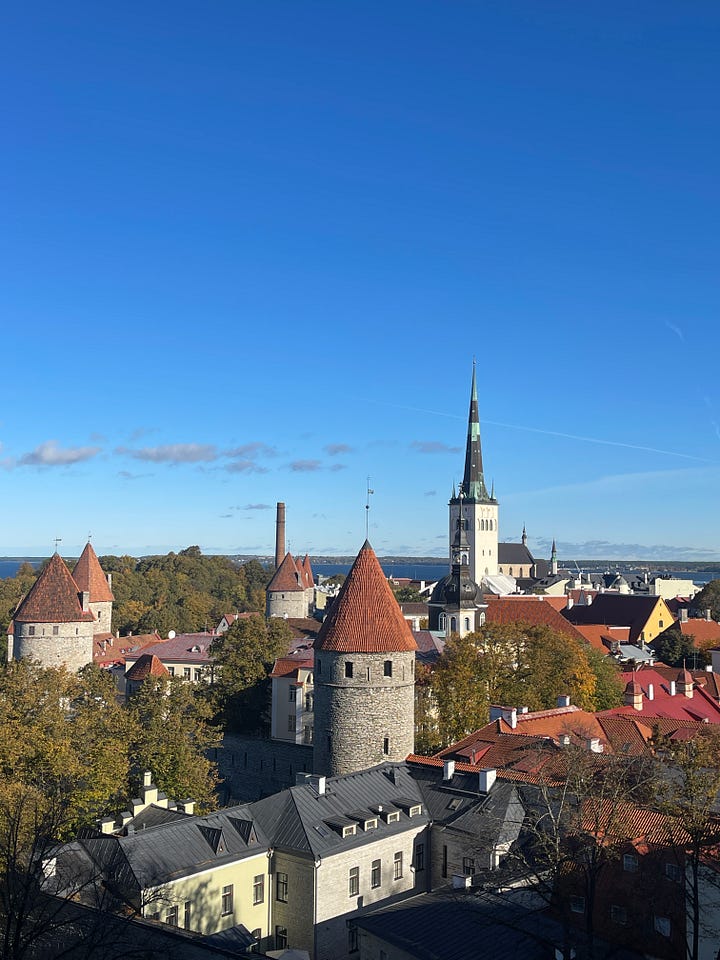
From the 18th century until the early 20th, Estonia was part of the Russian Empire, and later forcibly incorporated into the Soviet Union in 1940. What followed were decades of censorship, repression and cultural erasure.
The scars of Soviet occupation still run deep. Many Estonians can recall a time when speaking their language publicly was discouraged, when basic freedoms were denied, and when dissent could mean disappearance.
It’s part of why democracy feels so tangible here, because it was so hard-won and because so many people remember what it was like to live in a country without it.

Independence
In 1991, Estonia declared its independence from the Soviet Union in what became known as the Singing Revolution, a series of nonviolent protests where hundreds of thousands of Estonians gathered to sing forbidden national songs as an act of resistance.
That spirit of peaceful defiance, rooted in culture and language, still lingers. Today, Estonia is a member of the EU and NATO, fiercely protective of its sovereignty and outspoken in its support for Ukraine. While the threat from Russia is real and ever-present, Estonians move through the world with a kind of quiet confidence that’s hard not to admire.
Standing in solidarity with Ukraine
A City of Contrasts
This is a city that has mastered the art of contrast. There are medieval stone towers and cobbled streets, yes, but also vast warehouses overflowing with galleries, restaurants, studios, bakeries and concept cafes.
At the top of Toompea Hill, the Russian Orthodox cathedral looms with its ornate onion domes, visually stunning and spiritually complicated. Most Estonians don’t go there. It’s a relic of imperial dominance, built not as a house of worship for locals but as a symbol of power. Its shadow is both literal and metaphorical, cast over a city that has worked hard to reclaim its identity.
And reclaim it they have. Tallinn today has an energy that’s hard to pin down, youthful but not naive, creative but not careless. At Telliskivi Creative City, built around an old locomotive factory, I wandered through studios and galleries, coffee shops and bakeries.
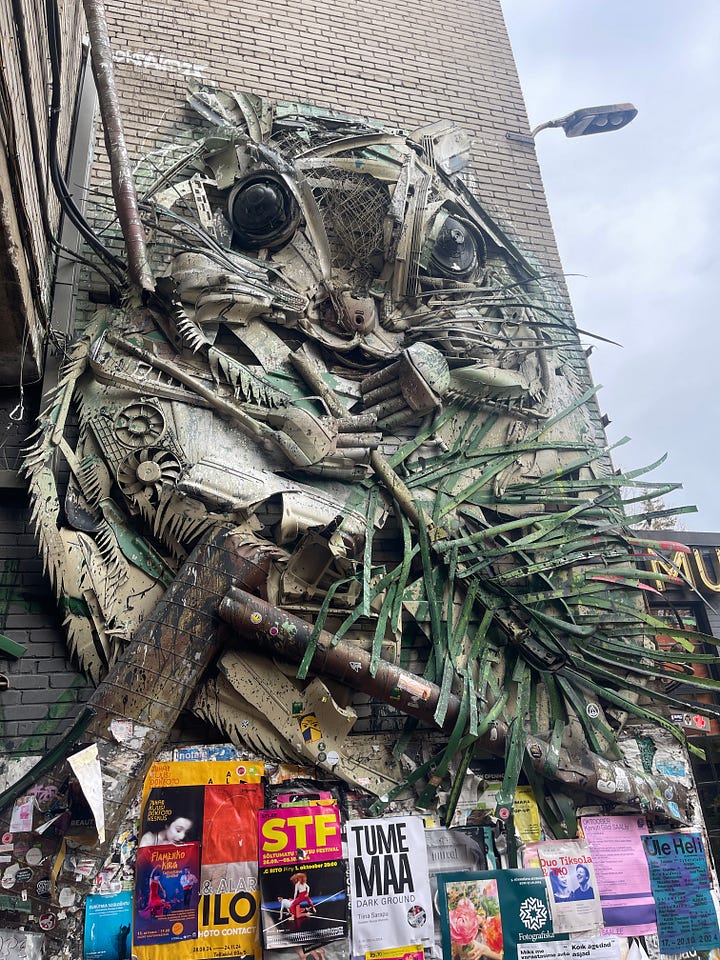
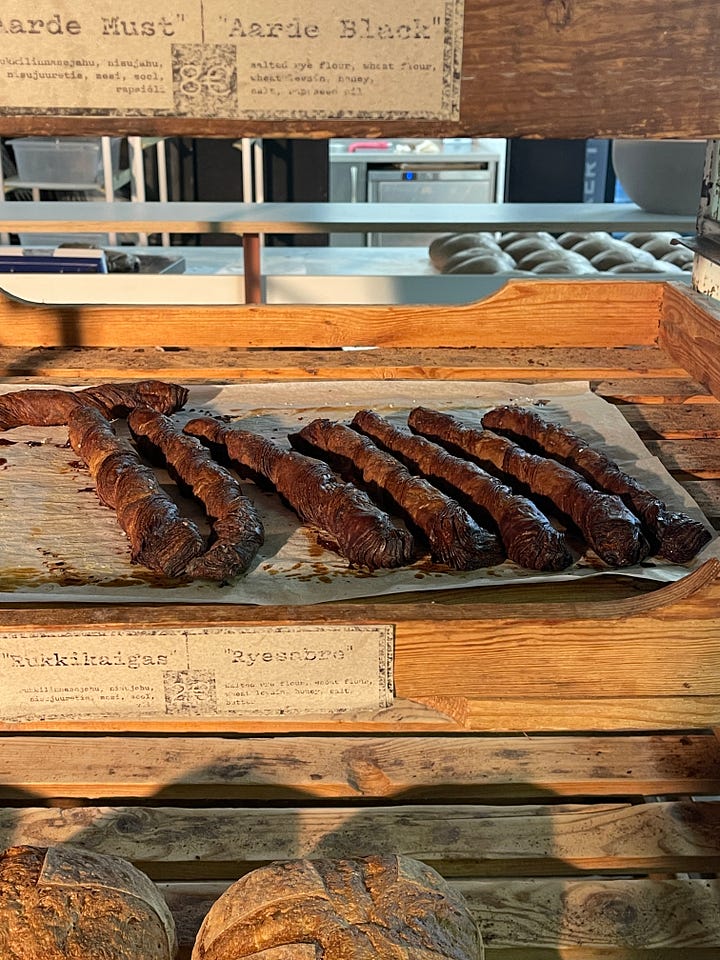
I saw slackliners practicing between trees, fashion designers making bold statements out of upcycled materials, and artists showing work that felt distinctly Baltic; quiet, moody, efficient, smart.
One night, we found ourselves in a packed courtyard where the city’s younger generation gathered, creative, expressive, and full of energy, channeling the rebellious spirit of their parents in ways that felt joyful rather than bitter.
There’s so much to do here historically, Kumu Art Museum, Toompea Castle, the Applied Art and Design Museum, but just as much to enjoy in the now. I found myself drawn to English-language bookstores and artisan shops, places that told stories in different forms. I brought home so much!
This is unusual, but I couldn’t help myself in Tallinn (see below for a shopping guide).
There was black garlic, a juniper wood butter board and knife, a bowl made of birch bark, pressed felt slippers, goats milk soap, linens, botanical tinctures made from Estonian herbs and flowers, and a book of Estonian fairy tales.
There was also bar of pine tar soap that was SO pungent I had to triple wrap it. It’s revered here for its medicinal properties, long used to treat burns, bites and skin conditions. With their love of it, Estonians prove that they don’t shy away from the strong stuff!
I also picked up Zuza Zak’s cookbook Amber & Rye at the English bookstore Rüütel & Matilda English Bookshop. This gorgeous book is part travelogue, part culinary history. Reading it while in Tallinn gave me an even deeper appreciation for how food is used here, as memory, as resistance, as celebration.
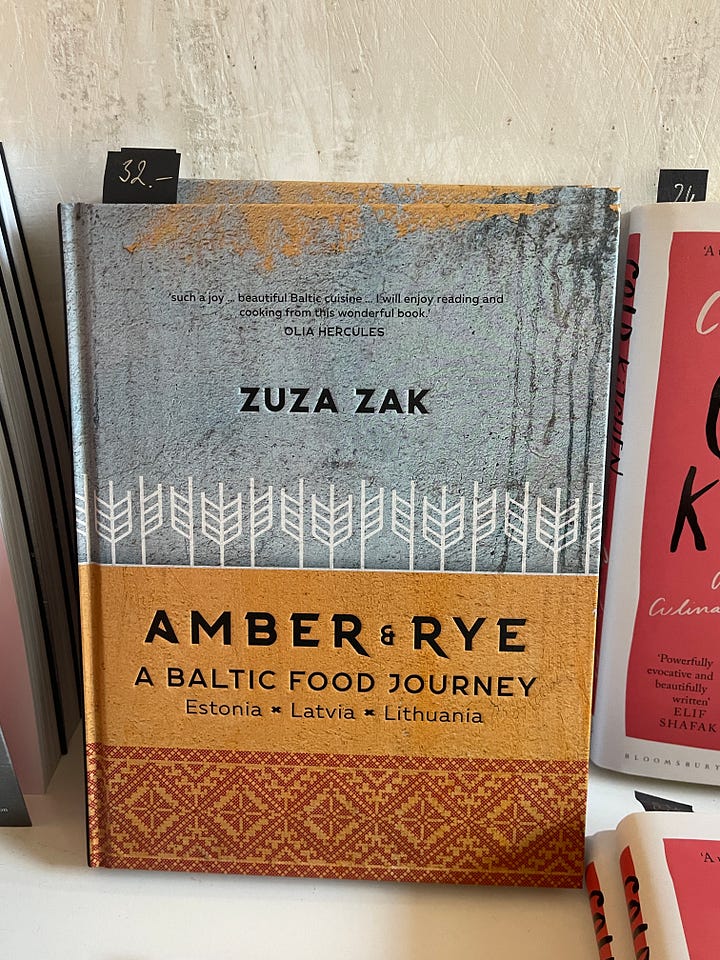
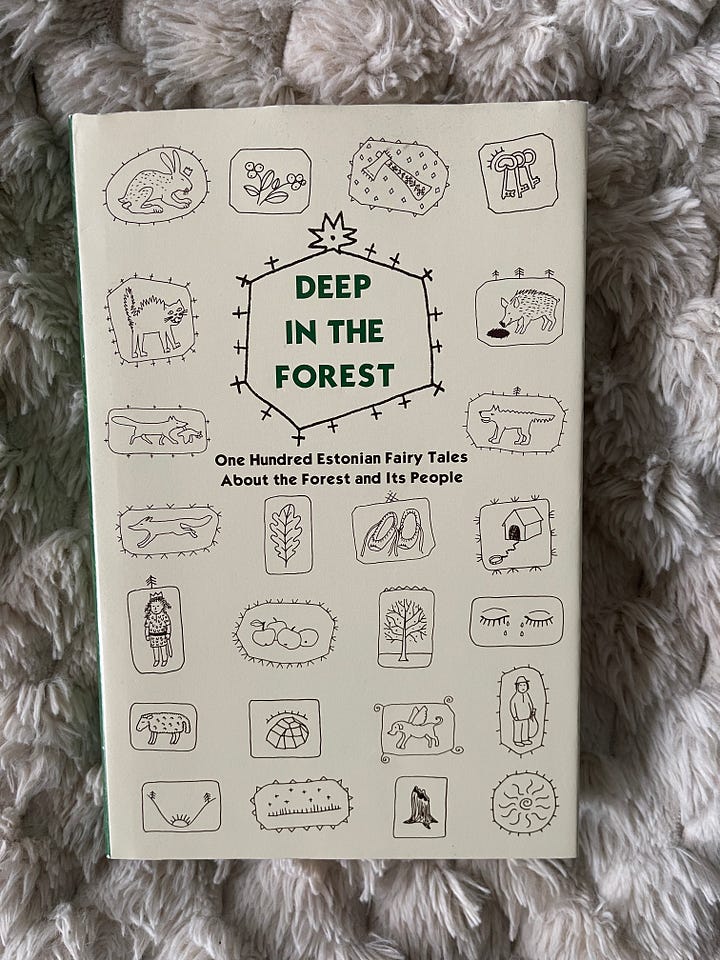
Migration, Identity, Memory & Hope
One of my favorite meals was lunch at The Kurze, a Dagestani restaurant in a converted summer cabin near the city center. Nuriyan Navruzova, the owner, is a former journalist from Dagestan, and she now folds dumplings by hand in this welcoming, no-frills space.
The kurze, crescent-shaped dumplings with intricate pleats, came stuffed with lamb and fenugreek potatoes, though seasonal specials like caramelized pumpkin were on offer too. That meal set the tone for my entire visit. Nourishing, unexpected and shaped by migration, identity, memory and hope.

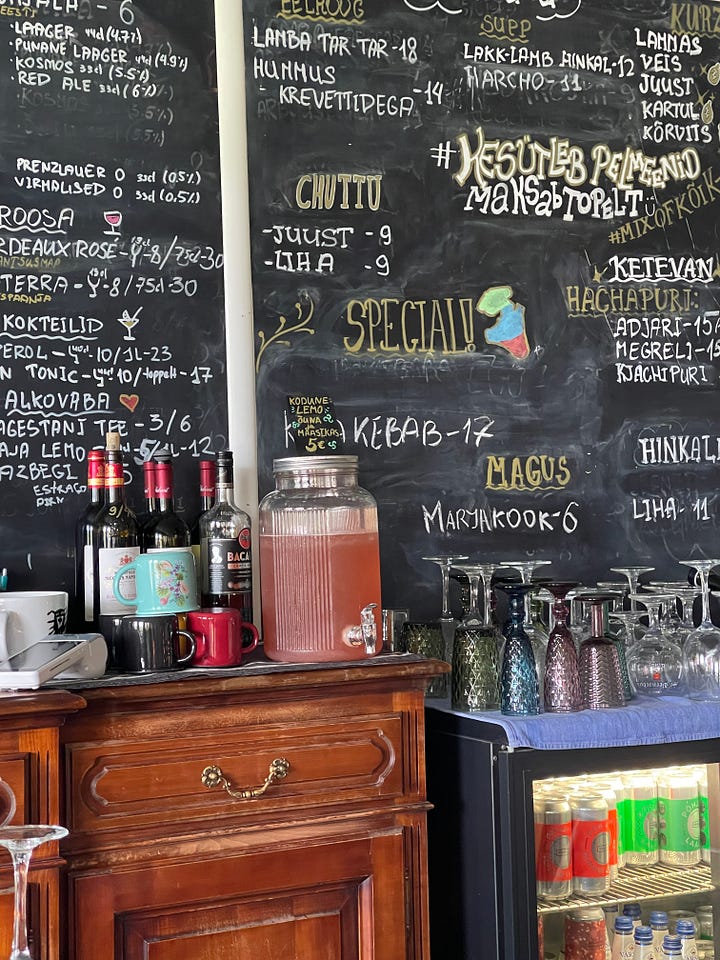
Tallinn’s food scene is a microcosm of the city itself: traditional Estonian fare served alongside restaurants reinterpreting local ingredients in modern ways, and newcomers like The Kurze bringing fresh flavors into the mix.
At dinners at Rado and Tuljak, we tasted the refined edge of Estonia’s culinary evolution. At Lore, lunch felt easygoing but carefully crafted. I also loved the simple pleasure of stopping at the food truck Kooker in the heart of the Old Town for blinis or sitting with a coffee at Varav, Johan & Nyström, or one of the many cafés that double as community spaces.
I wondered if Tallinn would feel like a mini-Prague, but it doesn’t. It’s more restrained, less touristy, more Baltic, with deep roofs, old stones, and painted wooden buildings that feel loved, not frozen in time. The facades might be centuries old, but what’s happening inside is constantly being reimagined.
Sometimes when I travel, I leave knowing I won’t return. Not because I didn’t enjoy it, but because some places feel complete in a single visit. Tallinn isn’t like that. I’ll be back, to see what it becomes, to witness how it keeps evolving, how it continues holding onto its independent spirit.
I’ll come back for the architecture and the artists, the design and the dumplings, the democracy that’s cherished rather than taken for granted. My next stop on this trip was the ferry across the Gulf of Finland, to Helsinki. But that’s a story for another post.
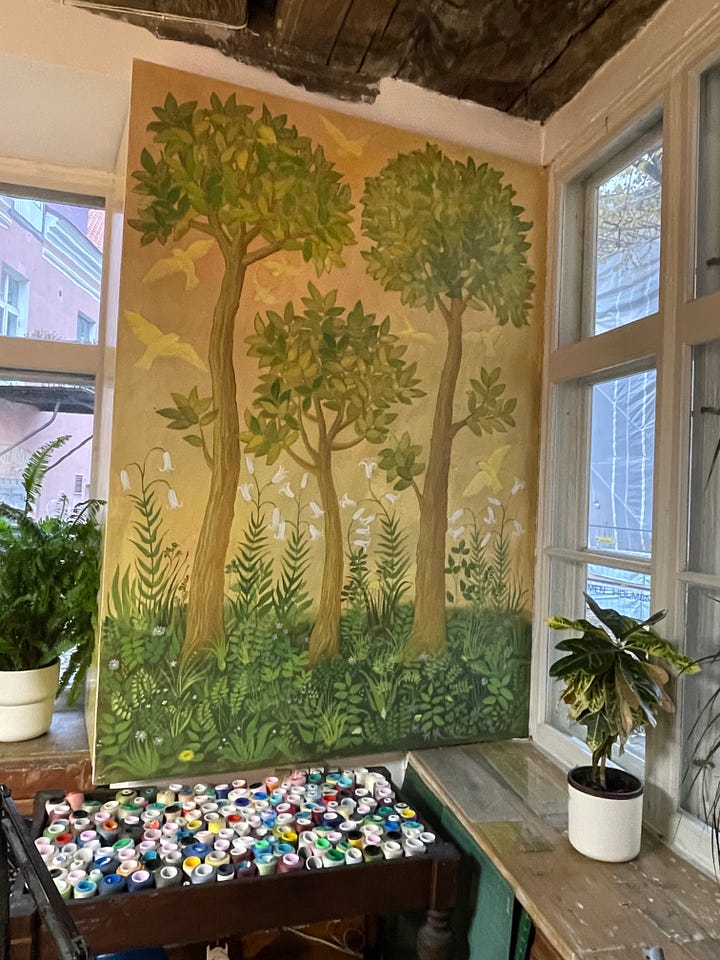
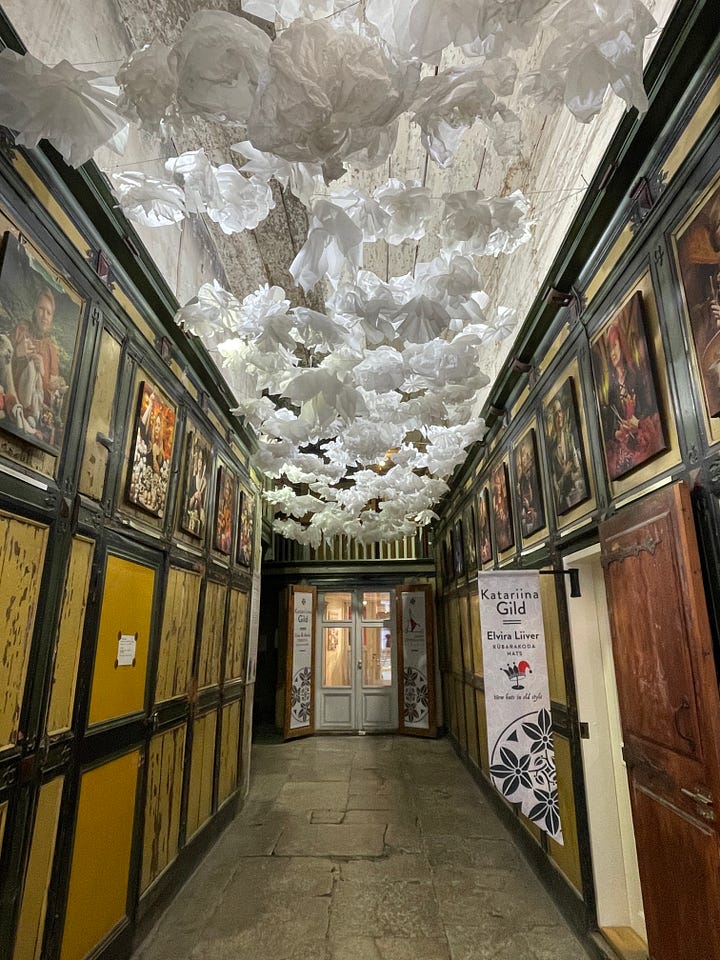
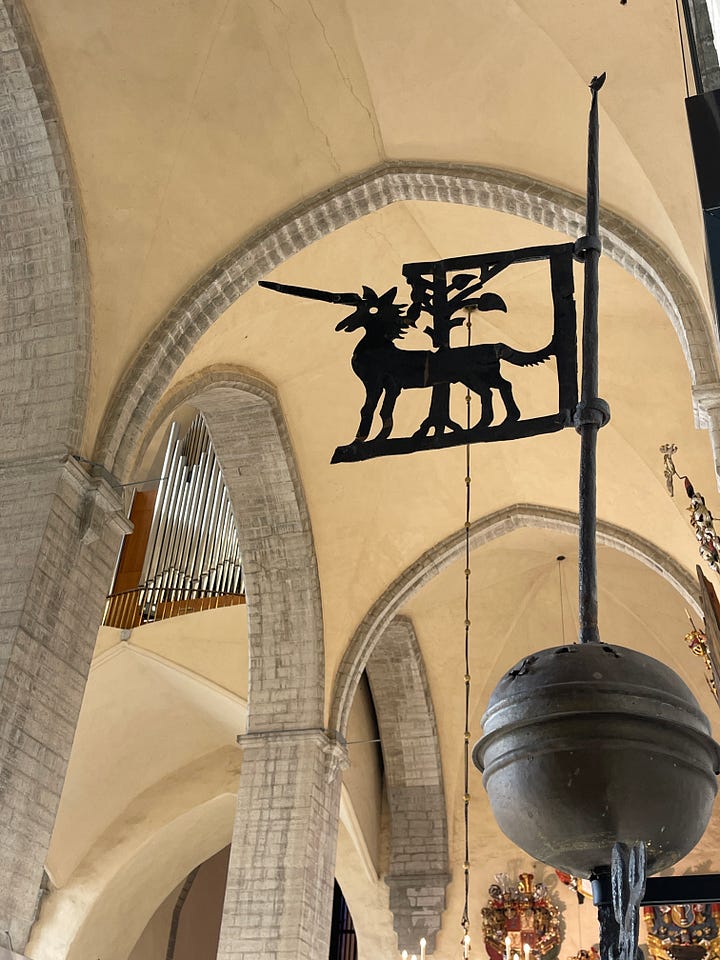
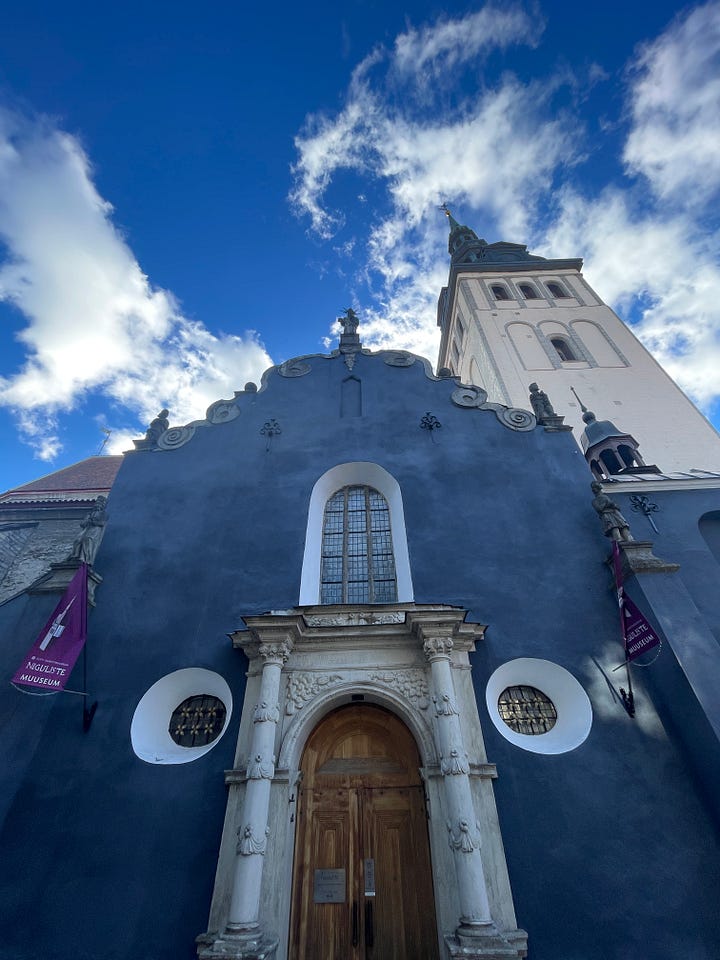
News, Favorites & Estonian Inspiration
Deep In the Forest: One Hundred Estonian Fairy Tales About the Forest & Its People, Compiled by Risto Jarv: Deep in the Forest is a rare gem of a book—an anthology of one hundred Estonian fairy tales that feels both timeless and urgent. Drawn from a culture deeply intertwined with its woods, these stories are steeped in folklore, animism, and a profound respect for the natural world. The forest here is not just a backdrop but a living presence: a protector, a trickster, a mirror to human behavior. This collection offers a glimpse into how Estonians have historically understood their relationship to nature, independence, and community. It’s not the kind of book you’ll breeze through; instead, it invites slow reading, a story or two at a time, ideally near a window or a fire. Beautifully translated and lovingly curated, it’s a work of cultural preservation and storytelling magic.
Amber & Rye: A Baltic Food Journey by Zuza Zak: One of the most rewarding things I picked up in Tallinn was Amber & Rye: A Baltic Food Journey by Zuza Zak. It’s more than just a cookbook, it’s a poignantly written exploration of Estonia, Latvia, and Lithuania through the lens of memory, migration, and flavor. Zak blends recipes with cultural commentary, family history, and regional insights, offering a warm and personal window into Baltic identity. The photography is evocative but understated, and the recipes strike a balance between honoring tradition and inviting experimentation. If you’re curious about the region or want to cook your way through it after visiting, this book is an excellent place to start.
The EstoCast Podcast: A bilingual podcast exploring Estonian culture through conversations on music, art, history, science, and food. Episodes alternate between English and Estonian, making it accessible for both locals and international listeners.
The Storied Table: The Storied Table is a new event series a long time in the making, inspired by the research and travel behind my recent cookbooks Elysian Kitchens and Eat Like a Monk. Through those books, I spent time in monasteries, temples, and sacred spaces around the world, learning how food can be a quiet act of devotion, connection and community. The Storied Table brings those experiences to life, offering communal meals from regional chefs and food producers in extraordinary places that carry their own sense of ritual, history, and beauty. We’re currently lining up a series of upcoming events (Minnesota, Lebanon, Upstate New York, Santa Fe, Northern California, England, Morocco, Ireland, Korea, Japan, Portugal and Spain are a few of the locations where we’re currently planning), with tickets for the inaugural gatherings going on sale July 1st. I’ll be sharing more about the inspiration and vision in future posts, but in the meantime, you can explore what we’re building at thestoriedtable.co and our Instagram.
101 Fantasy Feasts: Earlier this month, I launched my new newsletter, 101 Fantasy Feasts. Every Friday, I’ll share one chapter from 101 Fantasy Feasts (so far, feasts from the movie Big Night, the movie and book Chocolat and The Green Wedding from Game of Thrones have been featured). It’s a project that includes 101 feasts inspired by the most iconic meals from film, television, and literature, reimagined as real-life gatherings you can recreate. From the whimsical to the dramatic, each feast includes menus, setting details, party ideas, and five original recipes. It’s been a true labor of love (a project that I started on a whim during the pandemic when I missed gathering with people that now includes 101 feasts!), and I’m excited to finally begin sharing it with you. This series will run alongside my regular weekly newsletter, so you’ll still get your usual post, plus a little extra creative inspiration every Friday. This week it’s a full-on Mexican feast inspired by one of my favorite animated movies.
Eat Like a Monk: A Plant-Based Guide to Conscious Cooking and Mindful Eating: I had a book published last year by Simon & Schuster comprised of plant-based recipes primarily inspired by Buddhist monasteries throughout Asia. I wrote about Eat Like a Monk in a recent post that includes a few vibrant recipes from the book.
The gallery of Estonian female artisans at The Katariina Guild, a must visit in Tallinn
My newsletter is reader-supported.
Free subscribers get limited access to the weekly newsletter and two weeks worth of archives.
Paid subscribers get complete access to all of the content in my newsletters and my entire archives. You’ll also get all of the recipes, guides, interviews, cooking tips, essays and more, plus the ability to comment and participate in discussions.
Newsletters will arrive right in your Inbox or you can read them through the app.
Shopping Guide: What to Buy in Estonia
If you’re headed to Tallinn, leave space in your suitcase (or better yet, bring an extra bag). I went a little overboard in the city because there were so many gorgeous handcrafted items to bring home that were high quality, thoughtfully made and rooted in Estonian tradition. These are items you will actually use when you return from your trip rather than relegate to the back of the closet. Here’s what I recommend seeking out:
Juniper wood goods – Fragrant, smooth and naturally antimicrobial, Estonian juniper is used to make everything from butter knives to rolling pins to serving boards. These pieces carry the forest with them in both scent and form, subtle but unmistakable. Juniper boards are often used in Estonia to serve cheese or smoked fish.
Black garlic – Found in markets and gourmet shops through Estonia, this mellow, fermented garlic has a rich, caramelized flavor and is used in both traditional and modern Estonian kitchens. Look for paste, whole cloves or even powder.
Wet-pressed Estonian felt – Sourced from native sheep, this dense, breathable wool is used in everything from slippers and mittens to minimalist bags and home goods. You’ll find felt work in both natural and dyed colors, made by craftspeople keeping centuries-old techniques alive.
Birch products – Birch bark has long been used in Nordic and Baltic countries to make woven boxes, baskets, jewelry, and even sandals. Estonia’s modern artisans often blend these traditional techniques with a minimalist aesthetic. Look for coasters, spice jars, or small containers in shops like Kadu Kasitoo.
Muisto goat milk soap – A natural skincare item that reflects the Estonian appreciation for simple, effective ingredients. These bars are handmade using high-quality local goat’s milk, which adds creaminess and nourishment. They’re gentle, subtly scented (I would equate it to mild sandalwood) and beautifully packaged.
Pine tar soap – A deeply traditional Estonian remedy with a powerful, smoky smell. It’s long been used to treat skin conditions, bug bites, and minor wounds. Not for the faint of nose, but it works. Wrap it up well before packing!
Linen textiles – Estonian linen is durable, breathable and often hand-dyed in earth tones. Look for tea towels, napkins, aprons and table runners. Many are block-printed or embroidered with motifs inspired by folk patterns and nature.
Ceramics – Handmade mugs, bowls, and dishes with a rustic yet contemporary feel are easy to find, especially in artist-run studios. Look for earthy glazes, Baltic sea tones and practical forms designed for everyday use.
Marzipan – Tallinn has a long tradition of marzipan making (it was once used medicinally!), and you’ll find hand-molded, painted figures in specialty shops. It’s a sweet, nostalgic gift or a charming item to tuck into your own pantry.
For paid subscribers:
The rest of this post includes everything you need to bring a little piece of Tallinn home with you: my full travel guide (also available as a downloadable PDF) with where to eat, what to see and where to stay, plus the recipe for a black garlic butter polenta dish inspired by the rich, earthy flavors I encountered in Estonia.
I hope it helps you plan a future trip, or at the very least, dinner! The paid portion of this post also includes advice for anyone considering becoming an expat in Europe. I relocated from the US five years ago and enjoy sharing with you what I’ve learned along the way. If you're not yet a paid subscriber and want access to the full guide and recipe, you can upgrade your subscription below, I'd love to have you along for the full journey.








